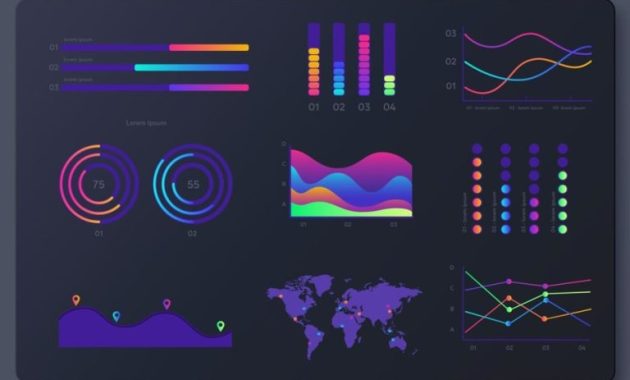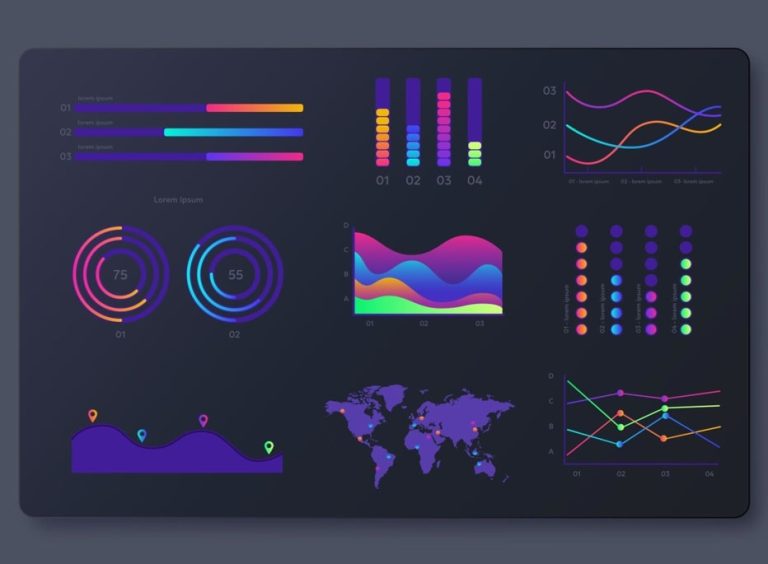
The Ultimate Guide to 9 Business Intelligence Tools: Unveiling the Power of Data
In today’s data-driven world, businesses are drowning in information. The challenge isn’t just collecting data, but understanding it. This is where Business Intelligence (BI) tools step in. They transform raw data into actionable insights. This comprehensive guide explores nine of the best business intelligence tools available. We’ll delve into their features, benefits, and how they can revolutionize your decision-making processes. This is the ultimate guide to business intelligence tools.
The goal of this guide is to provide a clear and concise overview. It allows businesses of all sizes to choose the right business intelligence tools. Whether you’re a startup or a large enterprise, the right tools can unlock hidden potential. They can also optimize operations and drive growth.
Understanding the Essence of Business Intelligence
Before diving into specific tools, let’s define what BI truly is. Business intelligence encompasses the strategies and technologies. It is used for the analysis of business data. The purpose is to provide insights and actionable information. This information helps executives, managers, and other end users make informed business decisions.
Key components of BI include data collection, data warehousing, data analysis, and reporting. These components work together to create a holistic view of business performance. They also enable organizations to identify trends, patterns, and anomalies. This leads to better decision-making.
Exploring Nine Powerful Business Intelligence Tools
Now, let’s explore nine of the leading business intelligence tools. We’ll examine their strengths, weaknesses, and ideal use cases.
Tableau
Tableau is a widely recognized leader in the BI space. It is known for its intuitive interface and powerful data visualization capabilities. Tableau allows users to connect to various data sources. It also offers drag-and-drop functionality for creating interactive dashboards and reports.
- Strengths: User-friendly interface, excellent data visualization, robust community support.
- Weaknesses: Can be expensive, particularly for large deployments.
- Ideal Use Cases: Creating interactive dashboards, exploring complex data, sharing insights across teams.
Microsoft Power BI
Microsoft Power BI is a comprehensive BI platform. It integrates seamlessly with other Microsoft products like Excel and Azure. Power BI offers a wide range of features, including data modeling, data visualization, and collaboration tools. It is a popular choice for businesses already invested in the Microsoft ecosystem.
- Strengths: Affordable, integrates well with Microsoft products, powerful data modeling capabilities.
- Weaknesses: Can have a steeper learning curve compared to some competitors.
- Ideal Use Cases: Data analysis, dashboard creation, and report generation for Microsoft users.
Qlik Sense
Qlik Sense is another leading BI platform. It is known for its associative data modeling engine. This allows users to explore data relationships that might be missed by other tools. Qlik Sense offers a visually appealing interface and a strong focus on data discovery.
- Strengths: Unique associative data modeling, intuitive interface, strong data discovery capabilities.
- Weaknesses: Can be less intuitive for beginners than Tableau.
- Ideal Use Cases: Exploring complex data relationships, data discovery, and interactive dashboards.
Looker (Google Cloud)
Looker, now part of Google Cloud, is a modern BI platform. It focuses on data governance and collaboration. Looker uses a semantic layer. This defines business metrics and data relationships. It is also optimized for data-driven decision-making.
- Strengths: Strong data governance, semantic layer, integration with Google Cloud.
- Weaknesses: Can be more complex to set up.
- Ideal Use Cases: Data governance, complex data analysis, and collaboration across teams.
Sisense
Sisense is a BI platform that focuses on providing embedded analytics. It allows businesses to embed dashboards and reports into their applications. This provides users with data insights directly within their workflows. Sisense is known for its speed and scalability.
- Strengths: Excellent embedded analytics, fast performance, scalable architecture.
- Weaknesses: Can be more expensive.
- Ideal Use Cases: Embedding analytics into applications, providing data insights to customers.
ThoughtSpot
ThoughtSpot is a search-driven analytics platform. It allows users to ask questions in plain language. The platform then generates insights and visualizations. ThoughtSpot is designed to be user-friendly and accessible. It is suitable for users of all technical backgrounds.
- Strengths: User-friendly, search-driven analytics, easy to use for non-technical users.
- Weaknesses: Limited customization options.
- Ideal Use Cases: Data exploration, generating quick insights, and empowering business users.
Domo
Domo is a cloud-based BI platform. It offers a comprehensive suite of features, including data integration, data visualization, and collaboration tools. Domo is designed to be a centralized hub for all business data. It helps users monitor performance in real-time.
- Strengths: Comprehensive features, real-time data monitoring, cloud-based platform.
- Weaknesses: Can be complex to set up and manage.
- Ideal Use Cases: Real-time data monitoring, centralized data hub, and collaborative dashboards.
Zoho Analytics
Zoho Analytics is a self-service BI and analytics platform. It is designed for small and medium-sized businesses (SMBs). Zoho Analytics offers a user-friendly interface. It also provides a wide range of features, including data visualization, reporting, and data blending.
- Strengths: User-friendly, affordable, strong data integration capabilities.
- Weaknesses: May have limited features compared to enterprise-level tools.
- Ideal Use Cases: Data analysis, reporting, and dashboard creation for SMBs.
Board International
Board International is a unified BI and performance management platform. It combines BI, CPM, and predictive analytics. Board allows users to create integrated plans and forecasts. It also provides a comprehensive view of business performance.
- Strengths: Unified platform, combines BI, CPM, and predictive analytics.
- Weaknesses: Can be more complex to implement.
- Ideal Use Cases: Financial planning, performance management, and integrated reporting.
Key Considerations When Choosing a Business Intelligence Tool
Selecting the right BI tool is crucial for maximizing its benefits. Several factors should be considered. These factors are before making a decision. Consider the following:
- Data Sources: Ensure the tool supports your existing data sources.
- User Experience: Choose a tool that is easy to use. It should also meet the needs of your team.
- Features: Evaluate the features. Ensure they align with your specific business needs.
- Scalability: Consider the tool’s ability to scale with your business growth.
- Cost: Evaluate the pricing model. Make sure it fits within your budget.
- Integration: Check the tool’s integration capabilities. Ensure it works with other systems.
Careful evaluation of these factors will help you choose the right business intelligence tools. These will drive better decision-making and business success.
Implementing Business Intelligence: Best Practices
Successfully implementing BI requires a well-defined strategy. Here are some best practices to follow:
- Define Clear Objectives: Determine your goals. Specify what you want to achieve with BI.
- Assess Data Quality: Ensure your data is accurate, complete, and consistent.
- Choose the Right Tool: Select a tool that meets your specific needs and requirements.
- Train Your Team: Provide training to your team. This will help them use the tool effectively.
- Iterate and Improve: Continuously evaluate and refine your BI strategy. Use feedback to improve it.
The Future of Business Intelligence
The future of business intelligence is bright. It is also rapidly evolving. Several trends are shaping the landscape:
- Artificial Intelligence (AI) and Machine Learning (ML): AI and ML will play a more significant role. They will automate data analysis and generate insights.
- Self-Service BI: More businesses will adopt self-service BI. It empowers business users to analyze data.
- Cloud-Based BI: Cloud-based BI solutions will continue to gain popularity. They offer scalability and flexibility.
- Data Democratization: Data democratization will become more widespread. Everyone can access and use data.
These trends will transform how businesses use data. They also enable them to make smarter decisions.
Conclusion: Harnessing the Power of Business Intelligence Tools
Choosing the right business intelligence tools is a game-changer. It can help businesses unlock the power of their data. This guide has explored nine leading BI tools. It provides insights into their features and benefits. Remember to consider your specific needs. Select the tool that aligns with your goals and budget. With the right BI tools, you can transform data into a strategic asset. You can also drive better decision-making and achieve business success. The future of business intelligence is exciting. Embrace these tools. Use them to gain a competitive advantage.
By leveraging the insights from this ultimate guide, you are well-equipped. You can navigate the complex landscape of business intelligence tools. You can also make informed decisions. This will help you unlock the full potential of your data. This will lead to a more data-driven future.
[See also: Choosing the Right BI Tool for Your Business]
[See also: Data Visualization Best Practices]
[See also: The Role of AI in Business Intelligence]

